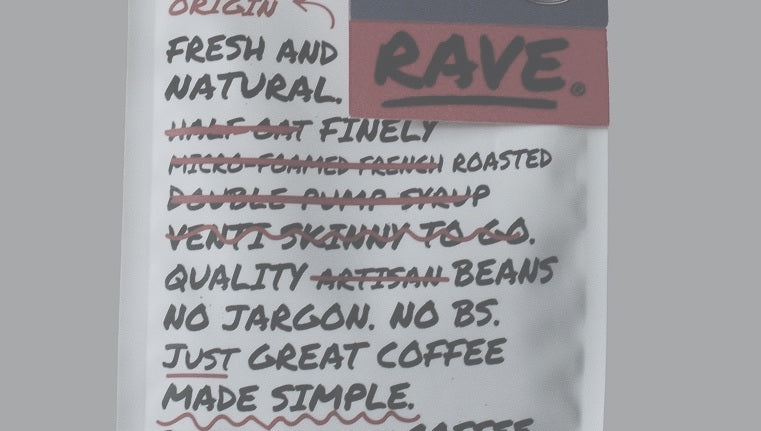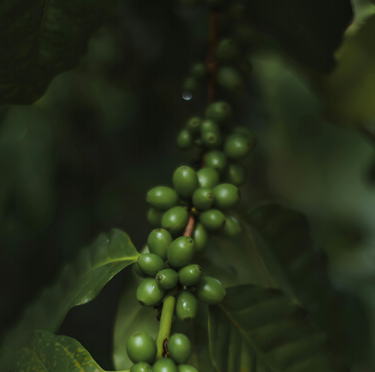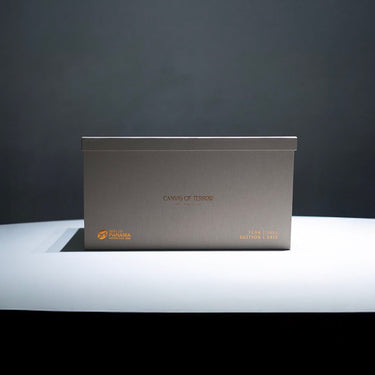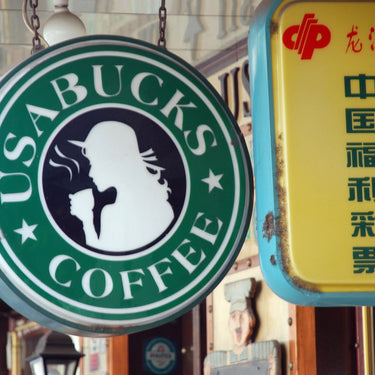Here at Rave Coffee, we’ve been on a mission to find the perfect coffee bags – ones that keep our quality beans fresh yet are ecologically responsible. We know coffee bag packaging comes with environmental impacts we aim to minimise. Through trials and tribulations, this remains a complex challenge! Follow along as we transparently share our packaging journey.
Let's Talk About Coffee Packaging - Table of Contents
- Overhauling Packaging Alongside Our 2019 Rebrand
- Choosing Materials for Coffee Packaging
- Optimised Production Processes For Coffee Packaging
- Customer Perceptions of Coffee Packaging
- The Truth Behind “Biodegradable” Coffee Packaging
- The Takeaway? No Perfect Coffee Packaging Exists...Yet!
- Closing Thoughts on Our Coffee Packaging Journey
- Coffee Packaging - Frequently Asked Questions
Overhauling Packaging Alongside Our 2019 Rebrand
When rebranding Rave in late 2019, we reassessed our packaging. Those classic foil-lined, plastic-heavy pouches had to go. We explored more sustainable options aligning with key criteria:
-
Maintains coffee freshness via a one-way valve and resealability
-
An eco-conscious, compostable or recyclable material
-
Durable enough for shipping wear and tear
-
Resealable zipper for retaining aroma
Choosing Materials for Coffee Packaging
When selecting packaging materials for coffee products, stability and freshness preservation should take priority. Coffee is sensitively perishable - exposure to oxygen, light or moisture quickly compromises flavour. Bags and pouches must act as protective barriers.
Typically, multi-layered laminates perform best, combing substrates like paper or plastic with useful linings such as aluminum foil. The materials work together to block humidity and gases from permeating whilst also remaining lightweight. However, these composite mixes reduce recyclability unless carefully engineered to separate post-use.
Alternatively, thicker graded single materials can also supply adequate moisture and odor protection when crafted from virgin-grade substrates. One prime example would be dense high-quality kraft paper, which when laminated with polyethylene barriers makes excellent recyclable coffee packaging. Some coated papers even compost well today.
The choice between laminates versus heavier single material often boils down to balancing effectiveness, cost and sustainability aims. Laminates tend to better prevent oxygen and moisture transmission at lower material weights. But thicker paper or cardboard alternatives generally offer more recyclable and renewable sourcing.
Optimised Production Processes For Coffee Packaging
Streamlining coffee packaging workflows promotes efficiency whilst minimising unnecessary waste. Planning for scaling needs upfront creates room for growth with less reworking.
Carefully selecting standardised pouch sizes suiting your core range allows utilising machinery across various products. Fine-tuning bag dimensions to match shelf spaces prevents reshaping processes too.
And don’t overlook pallet optimisation! Adjusting case pack sizes to fill pallets perfectly reduces shipment volumes and carbon footprints. You can even panelise bag layouts on pallet sheets for simplified transport.
On the graphic design front, digitising artwork templates enables easy adjustment. Dynamic files readily accommodate new roast types or seasonal packaging differences without redesigning from scratch each time.
Ultimately by mapping out production ecosystems, you uncover savings on materials, manpower, shipping and storage that positively impact sustainability and expenses.
Customer Perceptions of Coffee Packaging
Coffee packaging makes silent yet strong impressions on consumers when browsing market shelves. And with specialty coffee expanding rapidly, competition calls for originality through considered design.
Vibrant colors and graphical textures captivate attention, signaling newness and invoking intrigue. Flowing script logos styled like handwriting intimate small-batch artisanality whilst sleek san serif displays suggest modernity.
The interplay between matte and glossy finishes creates further intrigue - pairing matte grounds with bright glossy accents makes palettes pop. And don’t underestimate tactility’s appeal - subtle raised embossing or debossed logo detailing brings that satisfying texture against one’s fingertips.
But beyond pure aesthetics, customers perceive stability in the details. Sturdy durable construction connotes reliability and quality within. Qualities like thick premium paper stocks, strong seam seals, and reinforced side gussets suggest an integrity matching the fresh flavours inside.
With endless branding possibilities, coffee packaging offers ample creative room to establish distinctive new marketplace contenders.
The Truth Behind “Biodegradable” Coffee Packaging
At first, we found an “oxo-biodegradable” option seeming align with our green goals. However, in a bait-and-switch, the delivered bags were merely “oxo-degradable” lacking true biodegradability. As we learned, not all eco-friendly labeling tells the full story!
Next, we ordered supposedly biodegradable bags, but pandemic supply issues forced a pivot. We switched to LDPE plastic bags bearing the universal recycling Label 4. Though recyclable in theory, in practice plastic waste management remains flawed.
We felt cheated and disappointed by the misleading advertising. But it kickstarted our deeper education on unpacking the nuances within environmentally friendly labeling. Terms get used loosely and interchangeably when they differ significantly in meaning and effect.
The Takeaway? No Perfect Coffee Packaging Exists...Yet!
Through our coffee packaging updates, it became clear no flawless solution exists meeting both practical storage/shipping needs alongside wishful 100% sustainability. Recyclable isn’t the same as recycled. And “biodegradable” lacks nuance around renewability and safe breakdown.
As small business owners, we aim to balance quality storage for our product with ethical sourcing and materials. But the packaging industry has further innovation needed to reach environmentally harmless coffee bag production. For now, we settle on recyclable materials while continuing the search for better alternatives as technology progresses.
Looking to buy coffee beans online? Look no further! Rave Coffee offers you a world of excellence with our fresh roasted beans.We offer a wide selection of single-origin beans and expertly crafted coffee blends, all delivered right to your doorstep.
Why not sign up to our coffee subscription?
Closing Thoughts on Our Coffee Packaging Journey
Rave coffee fans, we appreciate your patience around these changes over the years! We know shifts – like our once beloved bag clips some loved and some loathed – can’t satisfy everyone. But we try to align with what works best for our beans while trending greener.
We welcome your constructive thoughts as we strive for that perfect coffee bag balance. Together through open conversation and innovation, we look positively towards more sustainable solutions.
Coffee Packaging - Frequently Asked Questions
How do you package coffee?
Well friends, safely transporting our precious coffee beans and grounds requires finding just the right bags and containers for the job! We primarily use thick, durable pouches to keep aromas locked in and moisture out. Gotta guard against anything compromising freshness before our blends reach your mugs, after all!
Some key aspects we evaluate are slip resistance, zip sealability, and whether materials meet recycling standards without sacrificing integrity in shipping.
Lots to weigh when picking perfect packages to send our babies off in!
What 2 things does packaging protect coffee from?
Coffee's two biggest enemies? Oxygen and humidity, my friends! They sneak sneakily in, stale-ifying flavours and textures when given the chance.
But never fear - with the right packaging, we banish those baddies! By choosing materials that put up strong barriers, it's possible to halt moisture seeping in or gases breaking down precious oils.
Foil layers reflect UV light too for an all-around protective seal keeping your coffee wonderfully preserved!
What information should be on coffee packaging?
For helpful coffee packaging, you'll wanna see basics like roast dates, specific blend names, and brew recommendations prominently displayed. Details like caffeine content, ingredients, storage guidance, and brand contacts prove useful too. And don't forget recycling labels so you know how to properly dispose of materials when the last scrumptious drops disappear! We aim to cover all the essential details you'd need without going over-the-top info overload. Just tidbits to get excited about what's inside!
What are the packaging requirements for coffee beans?
Packing up whole beans calls for extra sturdy armor - crushed fragments just won't brew right! We're talking thick, durable materials that can withstand bumps and jostles while preventing gases entering. Beyond barrier protections for freshness, intact beans also need ample room to breathe. One-way valve allow built-up carbon dioxide to escape so bags don't balloon out.
And the best bean bags will be resealable while maintaining structure on shelves. Bringing those babies home in tip-top condition means checking all the reinforced security and stability boxes!








As I informed you my printed Kilo bag arrived split along the seam with a nice rattle of coffee beans inside the box! The plain 250G survived. Does this happen very often because oddly the delivery box did not appear damaged/
Laurence on
Love the wee bag clips. Take them into work and reuse them 😊
Andrew on
Great explanation of the issues that companies are faced with when trying to be responsible in this very woke world.
Personally love your coffee and not particularly fussed about what bag or pack it comes in. I like the card and clip as I can show the card off to remind what beans are in the hopper.
CW on
I don’t hate the clips, but we have just got so many of them now, more than can ever possibly be reused.
What about giving an address (or even better a Freepost label) so that people can send them back to you to be reused? You could put a minimum quantity of 50 so people weren’t sending them back in ones and twos.
Rebecca Bartleet on
Hi Rave,
I have loved your coffee from the start and continue to do so but I find the ‘new’ clip, card and crossed out writing on the packet all a bit of a waste of time and rather off-putting. I much prefer the simplicity of the previous approach. I support finding more sustainable packaging but not at the expense of clips, cards and now having now to write the name of the coffee on the front when it arrives!
James on